I need help with...
Birds
Small birds can be pleasant to watch in the garden and are beneficial in removing insects that may otherwise cause damage. However, they can cause damage, especially when roosting or feeding from newly sown grass or plantings. Pigeons and seagulls are the worst offenders. When roosting, they can break away roofing tiles or guttering, and cause blockages to drainage. Their nests can also encourage infestations of insects.
Pigeon droppings can cause health risks: they are a slip hazard and can lead to the spread of diseases such as e coli and salmonella. When dry, the particles can be become airborne and flare up respiratory problems such as asthma.
Surfaces liable to corrosion can be damaged if they come into contact with bird mess. It’s important to reduce the risk of this in areas where children play, near kitchens, and around commercial areas. Keeping birds away from chimneys can be important: if they get stuck and then die, the smell can be unpleasant if the body isn’t removed quickly, and they can cause a chimney fire.
Magpies are a uniquely coloured black and white bird that live on insect pests, carrion, and the eggs and chicks of other, smaller birds. They are one of the most commonly seen birds in the British garden. It is thought that magpies are a contributing factor to the decline of songbirds, but there is no scientific evidence to support this. They are typically found in higher numbers in the countryside but are seen more frequently in urban parks and gardens throughout mating season.
SIGNS OF INFESTATION
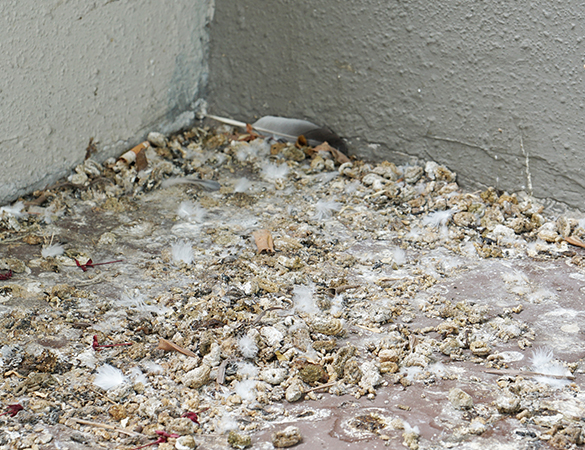 | 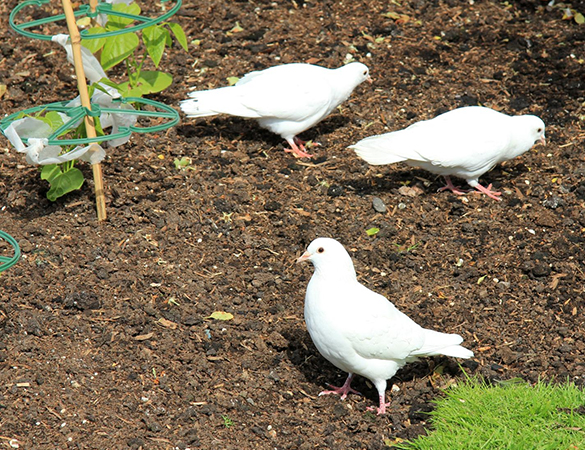 |
- Seeing birds sitting in outdoor areas, on fences, sheds, walls, roofs, etc.
- Spotting nests under ledges, balconies, guttering or other dark, enclosed spaces.
- Concentrated areas of bird mess.
- Destruction of plants, vegetables, fruit crops, trees or seedlings.
PREVENTION
Bird food put out for the smaller garden birds is likely to attract bigger birds such as pigeons, crows or seagulls. Use bird food hangers that are specially designed to stop bigger birds reaching the food. Ensure spilled grain is cleaned up whenever possible. Birds will also scavenge from bins so keep lids secured tight and excess waste is made inaccessible. Bin bags are no barrier against a tearing beak so refrain from storing bags of rubbish outside a bin.
Certain birds will return year-on-year to their dedicated nesting and roosting sites, so it’s important to tackle the problem before it becomes a problem. Treating a possible nesting site before the bird completes its nest is important. Blocking areas where birds will nest can be done with bird spikes, nets or wire mesh.
TREATMENT
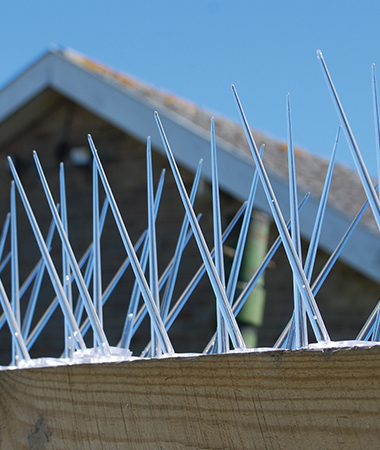 | 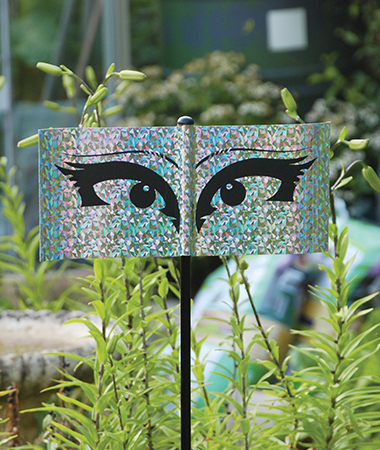 | 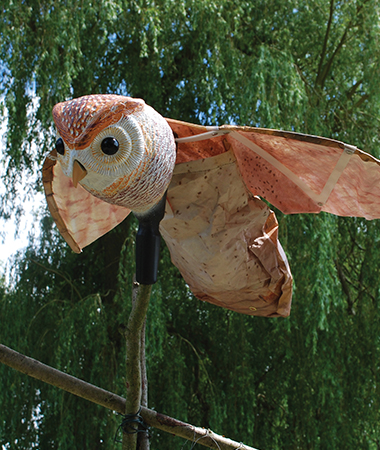 |
Decoys
Defenders has a full range of decoy bird deterrents that work to protect garden and outdoor areas from bird damage.
The Little Owl and Falcon are lifelike decoys with a durable construction that makes them ideal for use throughout the year, in all weathers. They both contain a mounting hole for easy set-up and use.
Swoop products mimic predator species’ natural movement to deter nearby birds. These are an ideal range to protect property, vehicles and vulnerable garden areas, including newly seeded lawns and vegetable patches. The Flying Falcon and Hunting Barn Owl both fly and swoop in the wind like predators.
Motion repellents
Although less decorative than the decoy repellents, Repeller Ribbon works to humanely scare birds and other wildlife using wind-driven motion, holographic patterns that reflect sunlight, and slight sound from its natural movement. The polypropylene acetate ribbon is long-lasting and easy to cut hang within the areas you want to protect from birds.
The Wind-Powered Bird Scarer and Eyeball Bird Scarer also use wind-activated movement to scare birds without harm. A ground anchor mounting pole is included with the Wind-Powered Scarer, while the Eyeball scarer can be hung from eaves and branches to hang over areas requiring protection.
For best use of decoy products and motion repellers, it’s recommended that the product is moved or repositioned every 2-3 days until birds are successfully deterred to avoid encroaching wildlife becoming too familiar with them. 2-3 decoys or repellers should be used to protect an area; bigger areas will require additional decoys to ensure effectiveness. Position movable decoys well over the area you wish to protect for maximum results.
Bird Spikes
Bird Spikes are the best deterrent for stopping birds from nesting. Easy to install, the spikes can be applied to surfaces where nesting is possible, or has been spotted. The spikes cause no harm and stop birds from landing on protected surfaces. The spikes are made from polycarbonate and are therefore UV stable and will not become brittle or discoloured over time. Available in two sizes, Wide and Slim Fit, both kits are supplied with All-Weather Silicone Adhesive for installation.
Cage traps
The Magpie Trap is a Larsen trap, designed for live capture of birds. Smaller garden birds are too lightweight to trigger the trap shut, and any non-target animal captured should be released alive, without harm. These traps should only be used to catch corvid birds such as magpies, crows and rooks. It comes with food and water bowls to promote good animal welfare.
Legal requirements
There are laws on the protection of all wild birds, their nests and eggs which means that destroying them is an offence. Refer to the Wildlife and Countryside Act (1981) before engaging bird control measures.
Also in this section...
need more help? speak to our experts today...





